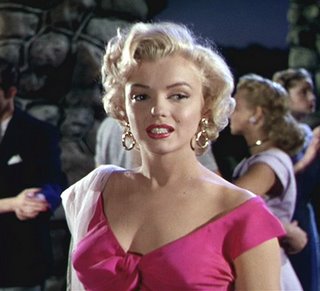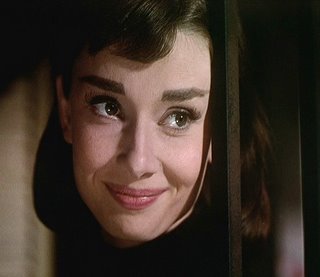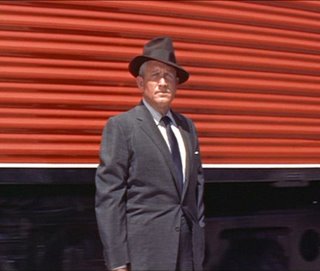 At At the heart of 1950s Hollywood is the irony that within its fanciful galvanic output, grandiose extravagances and aging excesses, its sheer force in star power and technological proficiency, there was a lumbering leviathan destined to premature extinction. Hollywood’s history had always been a turbulent narrative of artistic, critical and technological crises. Yet, beginning with the end of WWII in 1946, it did seem for a very brief window that a marked return to those halcyon days before the war was in order. Movies were cheap entertainment, but more to the point, they were a normalizing constant for returning soldiers eager to assimilate into civilian life.
At At the heart of 1950s Hollywood is the irony that within its fanciful galvanic output, grandiose extravagances and aging excesses, its sheer force in star power and technological proficiency, there was a lumbering leviathan destined to premature extinction. Hollywood’s history had always been a turbulent narrative of artistic, critical and technological crises. Yet, beginning with the end of WWII in 1946, it did seem for a very brief window that a marked return to those halcyon days before the war was in order. Movies were cheap entertainment, but more to the point, they were a normalizing constant for returning soldiers eager to assimilate into civilian life.However, by 1950 the American economy’s phenomenal growth had created a deviating anomaly
 against that guaranteed box office. With the American Dream firmly affixed in their mind’s eye, baby boomers were turning to home buying, appliances and that ‘new car smell’ to satisfy their consumer potential – raising families in the suburbs and mostly staying home in the evenings. This desire for home and hearth was also encouraged by the new miracle of television – a novelty that had most reasoning ‘why pay for movies when I can be entertained at home for free?’
against that guaranteed box office. With the American Dream firmly affixed in their mind’s eye, baby boomers were turning to home buying, appliances and that ‘new car smell’ to satisfy their consumer potential – raising families in the suburbs and mostly staying home in the evenings. This desire for home and hearth was also encouraged by the new miracle of television – a novelty that had most reasoning ‘why pay for movies when I can be entertained at home for free?’
To combat television’s sway on the American consumer, since studios could no longer rely on any film to recover its production cost solely from North American rentals, the major studios became increasingly competitive, while acquiring a more international flavor and flair. This new and explorative liberation in content was due in part to European cinema’s influence. But it also mirrored the realism American literature and theater had long since embraced as naturalistic, and, it was fueled by the great American
 dramatists of the period: Paddy Chayefsky, Tennessee Williams and Arthur Miller.
dramatists of the period: Paddy Chayefsky, Tennessee Williams and Arthur Miller.A relaxation in the code of censorship, (first established in 1934 to self-regulate objectionable content) permitted a fresh and more sophisticated approach to almost all the social issues: sexuality (The Goddess 1958), crime (Anatomy of a Murder 1959) urban violence (The Blackboard Jungle 1955), drug addiction (The Man With The Golden Arm 1956) and adolescence (Rebel Without A Cause 1955). But homosexuality – except in a highly sanitized incarnation (Cat on a Hot Tin Roof 1958) remained taboo.

Hollywood, behind the scenes, throughout the 50s was a much more grim reality than any seen on the screen. Senator Joseph McCarthy’s anti-Communist witch hunts initiated in the 40s by the House of Representatives’ Un-American Activities Committee (HUAC) sent notable writers and directors into forced exile. Screen dramatists retained their autonomy by writing under pseudonyms. But for actors accused of communist sympathies there was nowhere to hide. Under this cloud of uncertainty and political suspicions many dramas, thrillers, science-fiction films and westerns made reference to this back story, though none dared directly shine a light on the deluge.
Eventually HUAC’s dreaded political stronghold was
 broken, but not before it claimed its pound of artistic flesh from some of the industry’s most accomplished professionals. The forced ‘naming of names,’ that made cowards and enemies of almost all who sat before the committee, irreversibly damaged the reputations of director Elia Kazan and actor John Garfield – the latter suffering a massive and fatal heart attack as a result. By the end of the decade, even such beloved and iconoclastic relics as Charlie Chaplin were demonized as anti-American.
broken, but not before it claimed its pound of artistic flesh from some of the industry’s most accomplished professionals. The forced ‘naming of names,’ that made cowards and enemies of almost all who sat before the committee, irreversibly damaged the reputations of director Elia Kazan and actor John Garfield – the latter suffering a massive and fatal heart attack as a result. By the end of the decade, even such beloved and iconoclastic relics as Charlie Chaplin were demonized as anti-American.The government was also busily at work dismantling the studio’s monopolies with the Consent
 Decrees: an official edict that forced Hollywood to divest itself of its theater chains and extemporaneous publishing houses and record labels. Until the 50s, studios block booked their films to guaranteed venues. After the 50s they would have to compete in an open market for play time. In effect, the government conceived that Hollywood’s supremacy was strangling the aspirations of independent theater owners. In effect, both the studios and the theaters had benefited from this association. Forced to compete for films in an open market – the grand old movie palaces floundered financially; many closing their doors by the end of the decade.
Decrees: an official edict that forced Hollywood to divest itself of its theater chains and extemporaneous publishing houses and record labels. Until the 50s, studios block booked their films to guaranteed venues. After the 50s they would have to compete in an open market for play time. In effect, the government conceived that Hollywood’s supremacy was strangling the aspirations of independent theater owners. In effect, both the studios and the theaters had benefited from this association. Forced to compete for films in an open market – the grand old movie palaces floundered financially; many closing their doors by the end of the decade. 
Artistically speaking, the 1950s generated some top notch entertainment: masterful musicals (Singin’ In The Rain 1952, The Band Wagon 1953, A Star is Born 1954), scintillating dramas (The Bad and The Beautiful 1952, A Place in the Sun 1951), and epic westerns (High Noon 1952, Shane 1953, The Big Country 1958). The introduction of widescreen technologies precipitated the launch of screen spectacles or epics, some turgid but edifying; Quo Vadis (1951) and The Ten Commandments (1956); some genuinely affecting and effective; Land of the Pharohs (1955) and Ben-Hur (1959).

While the optimism and faith of established directors produced some of their most profound and popular works throughout the decade (Hitchcock, for example entered his final renaissance with such hits as Dial M For Murder 1954, Strangers on a Train 1951, The Man Who Knew Too Much 1956, and, North By Northwest 1959), new blood from directors Stanley Kubrick, Sidney Lumet and Robert Aldrich effectively reinvented Hollywood style and infused it with more than an ounce of cynicism.
The affecting romantic glimpses that Hollywood had misperceived about its own Mecca during the 1930s in such fare as What Price Hollywood (1932) and Bombshell (1933) gave way to darker, more critical portraits of the industry; most notably Billy Wilder’s Sunset Blvd. (1950), In A Lonely Place (1950) and The Sweet Smell of Success (1957).

Established stars solidified their place in film history throughout the decade. New stars – Marlon Brando, Paul Newman, Audrey Hepburn and Marilyn Monroe electrified the screen with their inimitable presences. Technological gimmicks came and went: Cinerama, 3-D, Smell-O-Vision. Some stayed; stereophonic sound, Cinemascope, Panavision.
And yet despite this extraordinary vitality there was a distinct, if faint, scent of decay creeping onto the backlots. That living, thriving, close-knit community once helmed by tyrannical moguls with extraordinary vision; the star system and its army of behind the scenes craftsmen, were already in a state of irreversible decline by 1949. Throughout the 1950s definite signs emerged to suggest that the industry as a whole would never be the same again. L.B. Mayer lost control of MGM. David O. Selznick grudgingly entered forced retirement. Samuel Goldwyn and Harry Cohn died.

If as a decade, the 1950s technically and officially ended on Dec. 31, 1959 – Hollywood’s resilient stylistic approach to filmmaking - that the 50s embraced and fostered - endured beyond this finite tenure, until Cleopatra (1964) the film that forever changed that blind naiveté. Hollywood of the 1950s therefore represented something of a final flowering in American filmmaking as a concrete system of intricately woven parts making up the whole. By 1960, that grand old system; the Hollywood of its youth was no longer an ideal artistic community. It was a fragmented myth.
@ Nick Zegarac 2006 (all rights reserved).
No comments:
Post a Comment